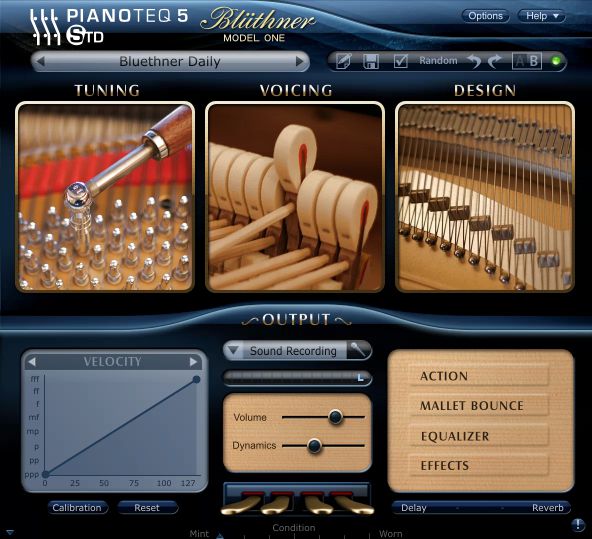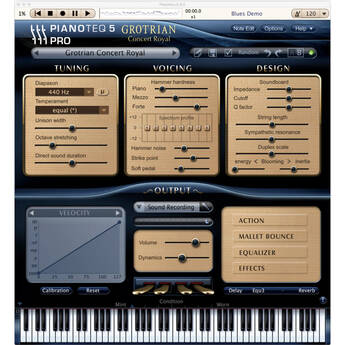
If a great piano is the main thing you’re after and the ability to sculpt the sound is secondary, the sampling or modeling decision is a matter of personal preference and requires testing. So, if you are in the market for a modern virtual piano, I’d definitely recommend trying the demo version and playing it yourself instead of only listening to audio demos. I also tried playing with it with a low-end 49-key MIDI controller with unweighted keys and audio interface latency set to maximum, and the difference is obvious even then.

That makes sense as there are no sampled velocity layers here – the instrument responds differently to each of the possible 127 velocity values, and the response of neighboring notes is consistent.

Others have described Pianoteq as feeling responsive, expressive or alive, but being a more technical person I’d say that it’s a feeling of confidence about the volume and tone color of every note as you’re playing it. It feels like it responds more naturally and accurately to velocity than any other piano I have. Playing with Pianoteq, the most impressive thing is how real it feels. More than just pianos, it can also model harps, bells, mallet instruments, harpsichords and even hammered dulcimers. It can work as a standalone application, VST, AU, AAX or RTAS plugin.
Pianoteq 5 review pro#
679 EUR gets you Pianoteq Studio which contains the Pro version plus all currently available instruments. Pianoteq 5.3 is the current version of their piano application, and it comes in three flavors – Stage (99 EUR), Standard (249 EUR) and Pro (399 EUR). Modartt have been developing a completely different approach in parallel – using sophisticated mathematical models to synthesize every note, and relying on samples only for hammer and pedal noises.

There’s been quite an arms race in virtual pianos over the past fifteen years, with some sampled pianos now featuring tens of thousands of samples and exceeding 100 GB of data.


 0 kommentar(er)
0 kommentar(er)
